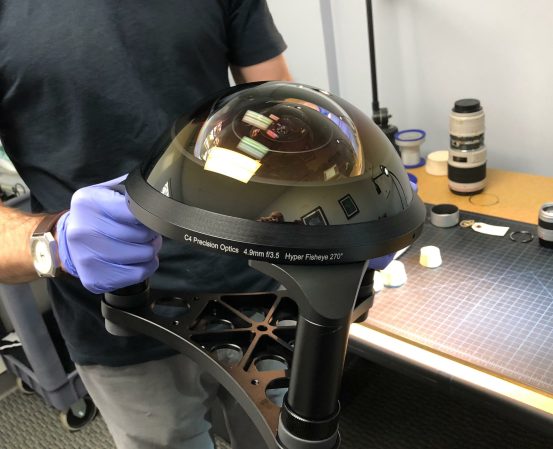

We may earn revenue from the products available on this page and participate in affiliate programs. Learn more ›
This new camera gives you a bug’s-eye view of life—literally. With 180 individual imaging elements arranged in a dome, it works like insects’ compound eyes. Like insect eyes, it’s got great depth perception and can see nearly 180 degrees all around it.
Researchers have made different compound eye cameras for years. The research could go into future spy cameras or endoscopes, those thin, long cameras doctors use to look inside body cavities. This new prototype, however, is exceptionally small and rounded, its creators wrote in a paper published today in the journal Nature.
The team of engineers, from the U.S., South Korea, Singapore and China, developed tiny imaging devices that each work a bit like an ommatidium—the individual “small eyes” that make up an insect compound eye. The lens at the top of the camera’s imaging devices are analogous to ommatidium corneas, while the posts the lenses sit on are like ommatidium cones.
The researchers make the artificial ommatidia in a flat, circular array, using rubbery materials that they can then easily puff up into a hemisphere, like blowing up a balloon. The cameras’ electronics are embedded in the material in a mesh.

That hemispheric shape lets the camera take images from 160 degrees around it with no distortion at the edges, because every single little ommatidium works independently. Meanwhile, each of the lens’ short focal lengths means that the camera doesn’t lose focus on objects that are either close by or far away.
Just like insect eyes, one big drawback of the compound camera is that its resolution is low. Each ommatidium creates one pixel in a picture. Mammalian eyes, and the regular cameras that are modeled after them, have higher resolution. Nevertheless, many insects move through the world with just 180 ommatidia, the engineers wrote, including fire ants and bark beetles.













